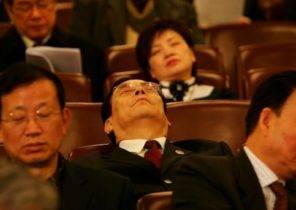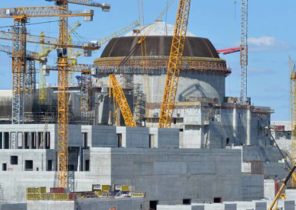
International human rights organization Amnesty International presented the results of the investigation of executions and torture in a Syrian military prison Saydnaya near Damascus.
According to human rights activists, according to their calculations, from September 2011 to December 2015 extrajudicial executions have been from 5 to 13 thousand inmates Sayedna. The following conclusions were made based on the testimony of former employees of the prison administration and the testimonies of former prisoners.
“It’s hard to imagine that such a large-scale and systematic operation was not sanctioned by senior officials of the government of Syria”, — underline the authors of the report.
“From December 2015 to December 2016, Amnesty International investigated the nature, regulation and the scale of the violations committed in the military prison Sayedna. In the course of its study, the organization interviewed 31 people who were prisoners in Saydnaya, four prison officers or guards, who previously worked in Siena, three former Syrian judges, and three doctors who worked in the military hospital of tishrin, the Syrian four lawyers, 17 international and Syrian experts on the issue of detention in Syria, and 22 family members of current and former prisoners in Saydnaya”, — the report says.
“Amnesty International has no evidence of carrying out executions since December 2015. However, detainees are still being transferred to Siena, continued “courts” in the field military court in al-kabune (near Damascus), and there is no reason to believe that the executions stopped. So, most likely, from December 2015, was executed thousands of people,” suggest the report’s authors.
Human rights activists urge the international community to conduct “independent and impartial investigation into extrajudicial executions and the methods of extermination in a military prison Sayedna”.
“The arrest, torture and death”
As they say in prison Syedna there are two detention centre, which can be from 10 000 to 20 000 people.
In the “red building” contains mostly civilians arrested since the conflict began in Syria in 2011. In the “white building” most of the detained officers and soldiers of the Syrian army, who were also arrested in 2011.
“Thousands of detainees from the red building were killed during a secret extrajudicial executions after they were held in conditions that amount to enforced disappearance. These murders were mass hangings,” write the authors of the report.
Before execution, the prisoner had handed down death sentences in a military field court, located in the al-Kabun in Damascus. As a rule, “trial” lasted one to three minutes, and then imposed a death sentence.
“Often arrest, torture and death in Siena and other government prisons threaten those who suspect any disagreement with the government. People from all segments of Syrian society. A lot of demonstrators, a longtime political dissidents, human rights defenders, journalists, doctors, humanitarian workers and students”, — noted human rights activists.
According to Amnesty International, the procedure of hanging is sanctioned at the highest levels of government.
“The death penalty approved by the Supreme mufti of Syria, or by the Minister of defence or chief of General staff who are authorized to act on behalf of President Bashar al — Assad,” the report said human rights defenders.
Syrian authorities shut Amnesty International entry into the country after the outbreak of civil conflict in 2011. Since then, human rights defenders had no access to the areas under the control of the government, so most of the interview was taken in southern Turkey or by phone.
According to Amnesty International, for this report, interviews were conducted with 84 witnesses.
Eyewitness accounts
Human rights defenders in his report presented the testimony of witnesses — both former guards and former prisoners.
According to interlocutors of human rights activists, virtually none of the imprisoned in the prison Syedna it was impossible to avoid punishment or torture.
Detainees in Saydnaya, which has imposed death sentences, taken from cameras in the second half of the day and tell them that they are transferred to one of the civilian prison in Syria. According to witnesses, instead, they are taken in a box in the basement where they keep to the middle of the night and brutally beaten.
Here, for instance, human rights activist said the former prison guard:
“We call the names of the detained, and they pull the shirt on her face… We put them in a row and they are holding each other… So we collected them all and took the camera down… They are not allowed to sit — they continue to stand. And we begin to yell at them… We start to beat them… We already know that they will die anyway, so what do we do with them whatever I want”.
The stories of prisoners, they heard the beating of those who were going to execute.
“[We] heard a loud noise. From 22:00 to midnight or 23:00 to 01:00 we heard coming from below the shouts and screams… This is extremely important. In Siena if you are silent you are less beat up. But these people were screaming like they were crazy… It was not the usual sound — it was unusual. It seemed that they skinned alive,” — said the human rights activists Nader (all names changed).
Every week and sometimes every day in the cells or blocks someone died from disease, thirst, malnutrition or injuries sustained during beatings and torture.
“At this time [February-June, 2014] in-camera every day someone died. We laid wrapped in a blanket the body in front of the door. In the morning came the guard. Chaves [the camera] had to say “Yes.” The guard asked me: “corpse there?” Chaves and then just again said: “exactly.” And then they took away the body,” says former inmate Kareem.
Omar, who was in high school, when he was arrested, told Amnesty International that torture and abuse that they had endured in prison, was extremely humiliating, but the psychological pain was sometimes stronger than physical:
“You will be hard pressed to find a former prisoner Syedna who will tell you that there really is because it’s too humiliating[…]I don’t even know what words to describe what I saw.”
Thus, according to the former prisoner Samir, the beatings were extremely brutal, in fact, unbearable.
Human rights defenders Amnesty International insists that, according to them, the Syrian government has used decades of torture and enforced disappearances as a means of suppressing dissent.
“In 1987 Amnesty International has documented the systematic use by the government in prisons 35 methods of torture. Since 2011, however, violations by the Syrian government in respect of detainees sharply increased both in scale and severity”, — emphasized in the organization.
According to Human Rights Data Analysis Group, March 2011 to December 2015 in Syrian government prisons killed an average of 300 people a month. Thus, during this time in prison has killed more than 17,7 thousand people.







